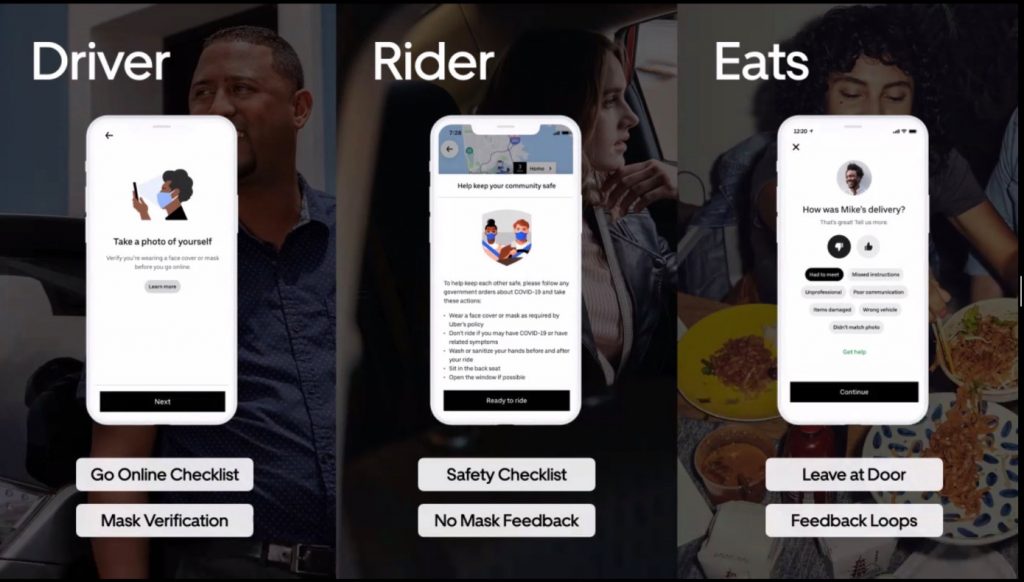There are quite a number of ride-hailing apps in Nigeria, the most populous Sub-Saharan Africa country. Bolt (previously know as Taxify) and Uber are the two most popular platforms largely because of visibility and volume of rides.
Both platforms have some history of expansion, campaigns, wins and losses here. As it stands, Bolt has over 60% of the market share volume of the ride-hailing market. This could be owing to a number of reasons.
First, I give a bit of background: a chat with the president of the National Union of Professional App-based Workers (NUPABW), Comrade Ibrahim Ayoade revealed that there are about 20,000 Bolt drivers in the country while Uber has about 10,000 drivers. That is a ratio of 2 to 1. The implication is that Bolt owns about 66% of the drivers’ pool across the country.
You may argue that drivers are free to enlist on either cab-hailing platform, which they usually do, and that the number on both sides are not made up of distinct folks. Yet, what this revelation indicates is that one out of every two drivers works exclusively on the Bolt app.
The essence of my examination is the possible reasons why this is the case. Here are some of my findings:
Expansion, Expansion and Targeted Expansion
Although Uber pioneered the African market (and indeed the global ride-hailing business), Bolt was able to upend the trend, especially in the EMEA region, with a swift expansion drive.
The Estonian company’s expansion strategy entailed that they entered, not only the major cities across Africa as Uber did, they also expanded into smaller cities, beyond the reach of Uber.
For example, I will share a brief historic timeline of the Nigerian project:
- May 2011: Uber launched its services and mobile app officially in San Francisco in the US.
- July 23, 2014: Uber launched its services in Lagos, its fourth city in Africa.
- March 23, 2016: After 1 year and 8 months, Uber expands to Nigeria’s capital city Abuja, its 400th city in the world.
- July 24, 2019: Exactly 5 years after it launched in Nigeria, Uber extends service to its 3rd Nigerian city, Benin City.
- August 2013: Taxify (later Bolt) launched its services in its home city, Tallinn in Estonia.
- November 18, 2016: Taxify with 20 cities across 15 countries, launches in Lagos Nigeria.
- November 18, 2017: Exactly one year after, Taxify expands operation to Nigeria’s capital city, Abuja
- October 5, 2018: Two years after entry, Bolt launches in Ibadan and Owerri, simultaneously
- May 3, 2019: Bolt expands to Calabar and Uyo cities in Southern Nigeria to become the most expansive ride-hailing platform.
The story is similar across the African scape. In Tanzania, Uber operates only in its largest city and administrative capital, Dar es Salaam while Taxify operates in Dar es Salaam, its capital, Dodoma and in Mwanza, a tourism hotbed on the shore of Lake Victoria.
In South Africa, both Uber and Bolt operate in the cities of Cape Town, Durban, Johannesburg and Port Elizabeth. But Bolt also operates in Polokwane.
If there is any factor that affects sales in a market segment such as sub-Saharan Africa apart from affordability, it is access. People need to use a platform that can always be accessed. It also means that Bolt can have drivers in areas where Uber does not.
Fixing the Supply Side: Drivers first, users will follow
At inception, both platforms competed for market share using different strategies. Uber and Bolt provided systems that had guaranteed customer satisfaction and safety. Being an American company, Uber entered the market with similar operating guidelines as it had in other cities.
This made the customers comfortable. The drivers weren’t but they had no choice. Uber aggregated more customers to them anyways.


According to Comrade Ayoade, Uber always updated its T&Cs, with each update making it less easy for the drivers to get away with anything. In fact, a good number of these drivers lost their access due to these rules and never returned.
Perhaps sighting this as a market opportunity, Bolt introduced a structure that provided a less excruciating option for drivers as it. At that point, it had a ready army of disgruntled ex-Uber drivers to start off with.
“Taxify is unique because it makes it easy for both driver-partners and riders during registration. There is no problem at all. Unlike Uber which has different policies that makes it difficult for us during registration”
Comrade Ibrahim Ayoade, President, NUPABW
Some of these include a set of security features on both apps that made it easier for Bolt drivers to influence their charges a bit more easily than they can on Uber. Technext wrote a report two years ago about drivers using a fake GPS itinerary app to illicitly bump up fares for local riders.
The other significant factor is the commission cost for both platforms. Uber is said to charge 25% as platform commission while Taxify charges 15% for the same. The increased charge meant that Uber had more flexibility to give better bonus offers to its customers.
What was the impact?
Drivers flooded the Bolt platform: a good number of them were similarly on Uber and many more were not. Also, drivers using both platforms preferred to pick riders on Taxify because of flexibility and higher earnings. As a result, users realised that the chances of getting a ride on the Bolt are higher (especially at rush hours). Users began to have both apps. Then, they went to Bolt first, instinctively.
Diversifying for different classes: Top versus bottom
Both Uber and Bolt diversified their offerings in the market. Uber introduced Uber Bus in Egypt with plans for Lagos. It also launched Uber delivery in Nairobi as well as the Uber boat service in partnership with the Lagos State Government.


On its part, Bolt introduced the tricycle-hailing service to its options for users in Uyo, Akwa-Ibom state. This is in addition to its ride-hailing and delivery verticals.
The challenge with the boat service by Uber is that it services a significantly small portion of commuters in Lagos. The locations along the designated route covers an insignificant travel space for the majority of commuters. Then, the cost is above average for many. The system has not been profitable for the local players before now. When Uber introduced a better but costlier option, it was a no go area for the masses.


Logistics faces the same issue in Africa. Except you have a massive interstate and inter-country structure that can absorb costs and afford you the expansive reach for profitability, you are toast. I discussed this point at length in my last article.
My point is that Uber pivoted into verticals that can be accessible to the minority that can afford. The tricycle business, on the other hand, is also affordable for the majority but it is easier for users to pick a rider than use the app. So, the game boiled down to how much of the share of the ride-hailing sector each commanded.
In that game, Bolt clearly leads the pack.
The Impact measured
Uber has been going through difficult times. In September 2019 (pre-COVID), the company fired a total of 435 employees to shore up more profit. That represented about 8% of members of staff running the company’s Engineering and Product team.
In May, it laid off an additional 3,700 employees and permanently closed down about 180 driver centres across the world. Its West-African office also witnessed a significant shed within the same period.
On the other hand, there hasn’t been any report of lay-offs from Bolt. Information from an inside source indicates that the company is self-sufficient and running without support from the Estonian parent company.
In the end, Bolt’s winning strategy can be summed up in one phrase: “innovating for the grassroots”.






